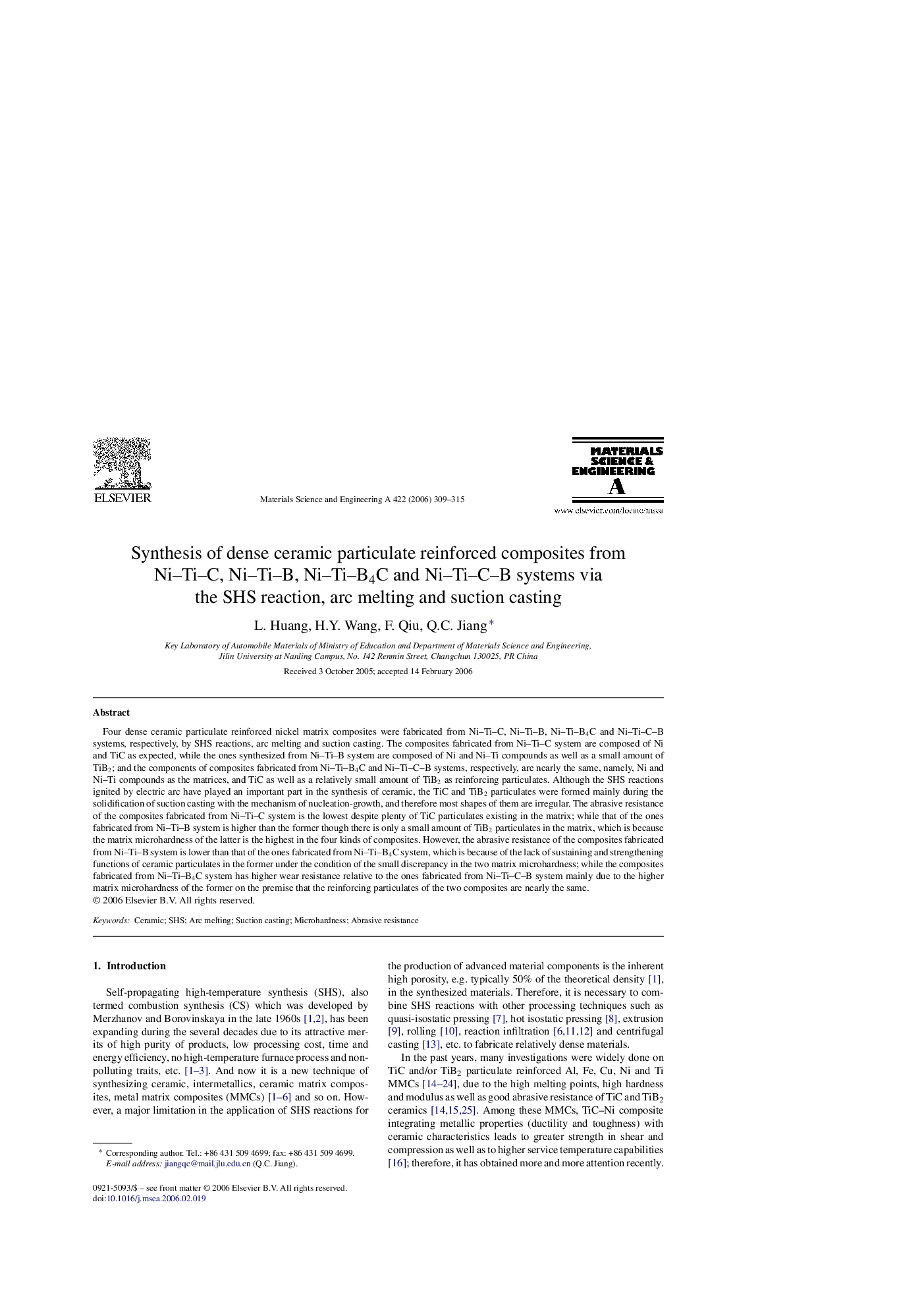| Article ID | Journal | Published Year | Pages | File Type |
|---|---|---|---|---|
| 1585782 | Materials Science and Engineering: A | 2006 | 7 Pages |
Four dense ceramic particulate reinforced nickel matrix composites were fabricated from Ni–Ti–C, Ni–Ti–B, Ni–Ti–B4C and Ni–Ti–C–B systems, respectively, by SHS reactions, arc melting and suction casting. The composites fabricated from Ni–Ti–C system are composed of Ni and TiC as expected, while the ones synthesized from Ni–Ti–B system are composed of Ni and Ni–Ti compounds as well as a small amount of TiB2; and the components of composites fabricated from Ni–Ti–B4C and Ni–Ti–C–B systems, respectively, are nearly the same, namely, Ni and Ni–Ti compounds as the matrices, and TiC as well as a relatively small amount of TiB2 as reinforcing particulates. Although the SHS reactions ignited by electric arc have played an important part in the synthesis of ceramic, the TiC and TiB2 particulates were formed mainly during the solidification of suction casting with the mechanism of nucleation-growth, and therefore most shapes of them are irregular. The abrasive resistance of the composites fabricated from Ni–Ti–C system is the lowest despite plenty of TiC particulates existing in the matrix; while that of the ones fabricated from Ni–Ti–B system is higher than the former though there is only a small amount of TiB2 particulates in the matrix, which is because the matrix microhardness of the latter is the highest in the four kinds of composites. However, the abrasive resistance of the composites fabricated from Ni–Ti–B system is lower than that of the ones fabricated from Ni–Ti–B4C system, which is because of the lack of sustaining and strengthening functions of ceramic particulates in the former under the condition of the small discrepancy in the two matrix microhardness; while the composites fabricated from Ni–Ti–B4C system has higher wear resistance relative to the ones fabricated from Ni–Ti–C–B system mainly due to the higher matrix microhardness of the former on the premise that the reinforcing particulates of the two composites are nearly the same.
